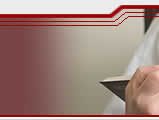Instructions for authors
- Manuscripts must be sent to
 . .
- Submission of manuscripts as electronic files is required. In addition to the original files, a PDF file should be sent with all fonts embedded, so that it displays properly in all computers. In order to assure that peer review is a double-blind process, the PDF file should be anonymous, containing a title page with abstract, JEL classification codes, and key words.
- Submission of a manuscript will be held to imply that it contains unpublished work and is not being submitted for publication elsewhere. The Editor does not accept responsibility for damage or loss of manuscripts submitted. Authors submitting a manuscript do so on the understanding that if it is accepted for publication, copyright of the article, including the right to reproduce the article in all forms and media, shall be assigned exclusively to the Publisher. The Copyright Transfer Agreements [in English or Spanish], should be signed by the appropriate person(s) and sent to this journal upon acceptance of the manuscript.
- Accepted papers should be prepared according to the following style rules (deviation from these rules may cause publication delays). We will be glad to provide a sample file as a guide.
- Manuscripts should be in letter-sized paper (8.5 x 11 inches) with a 1-inch (2.5-cm) side, top, and bottom margin. All pages should be numbered consecutively. A charge of 10 dollars may be assessed for each page in excess of 25. Except for special symbols, the font for text, equations and footnotes is Times New Roman. The main text should be double-spaced in 10-point type size. Footnotes should be single-spaced in 8-point type size, and numbered consecutively throughout the text with superscript Arabic numerals.
- Page 1 should contain, single-spaced, the following information. Centered: i) the title of the manuscript; ii) the name(s) of the author(s); iii) the institutional affiliation(s); and iv) Submitted: month/year (e.g., Submitted: June 2008). Against the left-hand margin: v) an abstract of not more than 150 words; vi) JEL classification codes: at least one classification code (a letter plus up to two digits) according to the Classification System for Journal Articles of the Journal of Economic Literature (JEL); and vii) Key words: up to six key words can be supplied. A footnote, formatted with an * appearing next to the corresponding author’s name, should contain the mailing addresses and e-mails of all authors, as well as acknowledgements and information on grants received.
- Section titles, subtitles, and sub-subtitles should be placed against the left-hand margin of the page, in bold letters. Titles must be indicated with Roman numerals (e.g., I. or II.), subtitles with letters (e.g., A. or B.). References to publications in the text should be as follows: Smith (1962) or (Smith 1962); if four or more authors, Kwiatkowski et al. (1992).
- Displayed formulae should be numbered consecutively throughout the text as (1), (2), etc., against the right-hand margin of the page. Equations must be punctuated as parts of sentences; please use a 10- point type size. Mathematical expressions should follow standard conventions. In particular, mathematical variables should appear in italics in equations, text and tables. Mathematical symbols and formulae should be avoided in footnotes because of legibility problems.
- The Appendix (if any) goes after the concluding section and is not numbered. If there are several appendices, they should appear as subsections carrying the letters A, B, C, … Equations, tables and figures in the appendices are numbered A1, A2, A3, … (i.e., the numbering starts anew in the Appendix, with an “A” that stands for Appendix placed before each number).
- References should appear after any appendices, listed in alphabetical order by name(s) of author(s), as follows:
For periodicals:
Oates, Wallace E., Paul R. Portney, and Albert M. McGartland (1989), The net benefit of incentive-based regulation: A case study of environmental standard setting, American Economic Review 79: 1233-42.
For books:
Akerlof, George (2005), Explorations in pragmatic economics, New York, NY, Oxford University Press.
Olson, Mancur (1965), The logic of collective action, Cambridge, MA, Harvard University Press.
For contributions to collective works:
Romer, Christina D., and David H. Romer (1989), Does monetary policy matter? A new test in the spirit of Friedman and Schwartz, in O. J. Blanchard and S. Fischer, eds., NBER macroeconomics annual: 1989, Cambridge, MA, MIT Press.
For working papers or unpublished manuscripts:
Caselli, Francesco, and Massimo Morelli (2001), Bad politicians, Working Paper 8532, NBER.
Drazen, Allan (2001), Laying low during elections: Political pressure and monetary accommodation, unpublished manuscript, Tel Aviv University.
- The text must contain a reference to where each table or figure should be inserted. Tables and figures should appear on separate pages after the main text, at the end of the manuscript. Unlike the rest of the document, the font for tables and figures is Arial.
- The content of tables is single spaced in 9-point type size. Footnotes to tables are in 8-point type size. Titles will appear outside and above the table, against the left margin, in bold, 10-point type size, and numbered with Arabic numerals. To allow editing, tables should not be inserted as images.
- Printed figures should preferably occupy half a letter-sized page. Legends of figures should be in legible type size, using a sans serif font. Footnotes to figures are in 8-point type size. Titles will appear outside and above the figure, centered, in bold, 10-point type size, and numbered with Arabic numerals. If possible, please submit a separate electronic file with plotting data for figures.
- Page proofs will be sent to the corresponding author. Proofs should be corrected carefully. The responsibility for detecting errors lies with the author(s). Corrections should be restricted to instances in which the proof is at variance with the manuscript.
- A printed copy of the entire journal, as well as an electronic offprint of the article, will be sent to each co-author for free.
|




